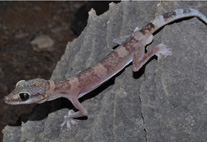Abstract
Geographic variation in vocalizations, morphology and plumage patterns in New World flycatchers is little understood, particularly in rare species with disjunct distributions. We discovered a distinct new flycatcher of the genus Myiopagis from cloud forests of the northern Central Andes in Antioquia, Colombia. Comparisons of vocalizations and external morphology, and molecular phylogenetic analyses, demonstrate that the “Antioquia Myiopagis” is a unique lineage of the M. caniceps-olallai group. We show that three specimens collected in 1940-1951 from cloud forests of Serranía de Perijá in Venezuela, and traditionally assigned to M. caniceps, represent another distinct taxon that is closer to the “Antioquia Myiopagis” and M. olallai. Both new taxa, from Antioquia and Perijá, are described as subspecies of M. olallai. We present a phylogenetic hypothesis for the M. caniceps-olallai group, in which M. olallai and the “Antioquia Myiopagis” are phylogenetically nested within the polytypic M. caniceps, which consists of at least four distinct lineages, indicating that species diversity in this group could be underestimated.

